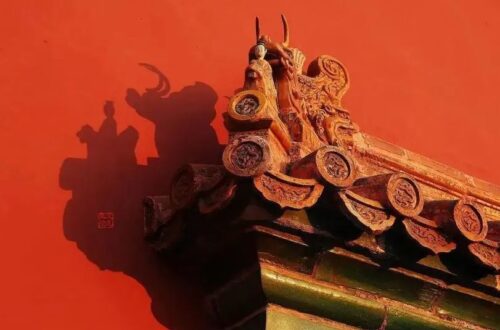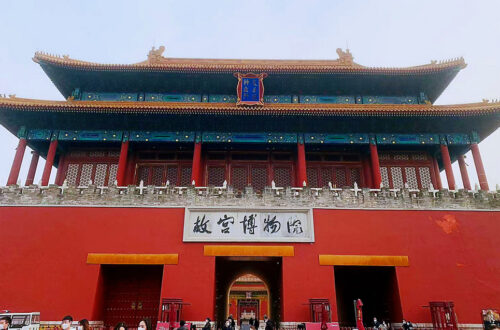
How was the Forbidden City heated in ancient times?
The Palace Museum, also known as the Forbidden City, is located in the centre of Beijing. During the Ming and Qing dynasties, it was the place where the emperors dealt with political affairs and lived. The Forbidden City not only has majestic ancient palace buildings, but also contains many ancient wisdom in palace life, heating is one of the good examples.
Heating by nature
The houses in the Forbidden City were cleverly designed to make use of the sun’s rays to keep them warm. Ancient craftsmen, after long observation, found that by designing the length of the eaves and the height of the pillars according to a ratio of 1 to 3, the sun would shine into the house in winter and keep it warm. In summer, the eaves would block the sunlight and keep the house cool.
This is based on scientific evidence. Because in different seasons, the sun hits the ground at different angles. In Beijing, for example, the sun hits the ground at an angle of about 76 degrees in summer and only about 27 degrees in winter. The craftsmen carefully designed the proportions of the eaves and pillars according to these angles. In addition, the walls of the Forbidden City are built tightly, which itself has a very good thermal insulation effect, so it is warm in winter and cool in summer.
Hand stoves
Hand stoves were small objects designed to warm the hands in winter, and could be carried, held, or put up the sleeve to keep warm, similar to the modern ‘warmer pads’.
The use of hand stoves is very simple, add wood chips or huller to the stove, the heat generated by their combustion will first be transmitted to the copper inner liner, and then through the air between the inner and outer layers, so that the shell of the hand stove is both warm and will not burn your hands. In the Forbidden City, the hand stove is usually placed on the kang or kang table, eunuchs, palace maids will also be based on the need to move it to the right place.
Footstoves and bedwarmers
Footstoves are very similar to handstoves and are commonly shaped like a round, slightly flat, altar. To use a footstove, fuel such as charcoal or sawdust was added to the stove. Footstoves were often found in ancient palaces, study rooms, bedrooms and other places where you needed to sit for long periods of time.
Hand and foot stoves had no way to warm the comforter, and warming the bed mainly relied on something called “soup old woman”. It was flat and round, mostly made of copper or tin. Before use, fill it with hot water, the same principle as today’s warm water bag.
Charcoal pots
Charcoal Pots, also known as ‘Xun dian’. Before the Manchus entered the Customs, fire pans were usually made of loess and used to warm the room. After the entry, the braziers gradually became made of copper or copper enamel, and became an important heating tool for the Qing court.
The charcoal basin is divided into two parts, upper and lower. Below is the basin, which has three legs, an open rim and a symmetrical lifting beam to make it easier to carry. On top is the cover, which is engraved with openwork floral designs that are both beautiful and practical. This design allows the charcoal to burn fully, distributing the heat effectively, and also prevents sparks from spilling out and starting a fire.
In the ancient court, the distribution and use of charcoal pots had strict hierarchical regulations. People of lower status, such as Promise and Changzai, were not eligible to use charcoal pots for warmth. On the other hand, emperors, empresses and other people with honourable status could use more exquisite and high-class charcoal pots.
On the night of New Year’s Eve, the court would light charcoal pots in the courtyard, and people hoped to pray for good luck and happiness in the coming year in this way. Charcoal pots were also used to smoke clothes and purify the air of the palace. Putting spices into the charcoal pots, the smoke from burning can purify the air and remove odours.
Floor heating
- Principle of ‘Heating by Fire’Floor heating, pretty much the same as what used to be called ‘heating by fire’. It was a circle of flueways built under the house, like a maze. Eunuchs burned fires in special pits, and the smoke flowed down the flue, baking the ground hot. Hot air rises, the whole house is warmed up, which is now installed at home with the same principle of underfloor heating. Forbidden City floor heating system has a fire in a pit, hearth, as well as the main flue and many branches of the flue. These flues are arranged like a centipede, so they are also called ‘Centipede Road’.
- Where does the charcoal for underfloor heating come from?The best charcoal used to burn the floor heating is called ‘Hongluo charcoal’. This kind of charcoal has to be burnt with hardwoods from places like Daxing, Tongzhou and Wanping, and after burning it is packed in small round baskets coated with red clay, so it is called Hongluo charcoal. Hongluo charcoal burns for a long time, has a strong fire, and has no smoke or odour. However, not everyone can use it. In the palace, only concubines of high status can use it, and there is a limit to the number of uses. For example, the Empress Dowager can use twenty catties per day in summer and forty catties in winter; the Empress ten catties in summer and twenty catties in winter, all of which are clearly defined.
Warm pavilion with a heated bed
A conservatory is a small space in a house with underfloor heating, separated from the rest of the palace by a wooden partition. In this way, this small space can be warm all the time and make people feel especially comfortable. Like Kunning Palace, the Ming Dynasty was the Empress’s bedroom, and in the Qing Dynasty, the easternmost two rooms became the Emperor’s wedding with the cave, also separated by this method, so called ‘East Warming Pavilion’.
The Heatable brick bed in the Forbidden City also utilises the heat from the underfloor heating. In the house, especially next to the windows, there was a rectangular wooden platform. In winter, the emperor and empress could sit and lie on it and feel warm. The kang was very popular in the north and was used for sleeping as well as for warmth. in 1644, the Manchu imperial family brought the kang to the Forbidden City, and it was installed in many of the buildings of the inner court.





One Comment
zoritoler imol
I’ve been surfing online more than three hours lately, yet I by no means found any interesting article like yours. It’s lovely value enough for me. In my view, if all web owners and bloggers made good content material as you did, the net will probably be a lot more useful than ever before. “No one has the right to destroy another person’s belief by demanding empirical evidence.” by Ann Landers.